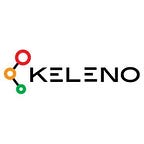O-RAN : Transforming the 5G Radio Access Network Industry
Open Radio Access network is a term for industry-wide standards for RAN interfaces which support interoperation between vendor’s equipment. It is adopted by Operators and equipment manufacturers to reduce the infrastructure deployment cost and lower for a new product innovation entry.
O-RAN: A Quick Guide
The needs of 5G on network infrastructure will be huge, requiring massive amounts of data to be delivered over a large amount of spectrum to a large number of users at challenging latencies. To overcome this difficulty, the network’s various logical functions must be able to be placed in different physical locations in a flexible manner and a new RAN Intelligent Controller function to coordinate them.
The Ran components such as Radio and the digital baseband are built on the proprietary hardware and these components mainly use vendor-specific protocols for communications. Many of the software functions and interfaces between the various RAN components are optimized for that proprietary hardware. For example, the Common Public Radio Interface (CPRI) is widely used for LTE front haul (the connection between the radio and the baseband unit), however vendor-specific implementations frequently limit multi-vendor operability.
O-RAN is providing the industry with well-defined specifications to enable the deployment of O-RAN-based programmable networks with completely disaggregated modular O-RAN network functionalities.
What exactly is O-RAN?
The flexibility of deployment, optimization, management, and orchestration of the network is more complementary in the 5G technology. To minimize both CAPEX and OPEX, intelligence and automation must be incorporated into all parts of the network lifecycle.
Because RAN disaggregation makes it easier to manage the complexity necessary to meet the 5G challenge, open RAN technology relies on intelligence at every tier of the RAN architecture. Operators will be able to install a completely self-managed, zero-touch automated network as a result of this.
O-RAN-Alliance is developed by the operators to build a supply chain ecosystem that can promote an environment for existing and new vendors to drive innovation.
O-RAN Terminology
O-Ran is break up into three main building blocks
1. Radio Unit
2. Distributed Unit
3. Centralized Unit
The Radio Unit is where the radio frequency signals are transmitted, amplified, received, and digitized.
The RU is attached to or built into the antenna.
The computation portions of the base station are the DU and CU, which deliver the digitized radio signal into the network. The DU is physically near or at the RU, but the CU can be closer to the Core.
The Architecture of O-RAN
The main key elements of O-RAN Architecture are
O-RAN Radio Unit
It decodes radio frequencies received by the network’s physical layer. A front haul interface sends the processed radio frequencies to the O-DU.
O-RAN Distributed Unit
The radio link control (RLC) protocol, the medium access control (MAC) protocol, and the physical interface protocol are all hosted by a logical node (PHY).
O-RAN Centralized Unit
The radio resource control (RRC), service data adaptation protocol (SDAP), and packet data convergence protocol are all logical nodes that host a few protocols (PDCP).
Service Management and Orchestration Framework
For the functions it controls, it contains an integration fabric and data services. Within the O-RAN, it enables managed functions to communicate and interoperate. The SMO is in charge of connecting to and managing the RICs, O-Cloud, O-CU, and O-DU.
RAN-Intelligent Controller
Non-real-time and near-real-time RICs are the two varieties of RICs. Both are logical functions that control and optimize an O-element’s RANs and resources. With granular data gathering and exchange across the E2 interface, a near-real-time RIC regulates and optimizes elements and resources. The E2 interface connects the O-CU and O-DU to the near-real-time RIC.
O-Cloud
O-RAN architecture is used to create a cloud computing platform made up of physical infrastructure nodes. It also builds and hosts the virtual network functions (VNFs) that the RICs and other infrastructure components utilize.
Benefits of O-RAN
As we all know, deployment and management of RAN is the most expensive part of a wireless network, which denotes current approaches to network growth and maintenance will not scale to meet the 5G challenges and opportunities. Therefore, operators are now seeing O-RAN as the most viable option to help them to meet those goals:
- Enable an open, multi-vendor interoperable environment that promotes healthy competition lowers RAN equipment costs and expands the pool of vendors
- Enable automation to save money on deployment and administration.
- Provide scale and agility by implementing network components as software functions that may be expanded to meet network capabilities and capacity demands.
Challenges Involved in O-RAN
Consider a network in which RAN components such as the central unit, distributed unit, and radio unit are supported by multiple vendors and here operators and vendors will face greater challenges in identifying issues and ensuring that performance/cost compares favorably to an optimized single vendor solution.
Not to mention, another significant issue will be integrating new functionalities and orchestrating new services from multiple suppliers in an O-RAN-based network.
Conclusion
Many operators are establishing O-RAN Test and Integration Centers (OTIC) across the world. The primary mission of OTIC is to guarantee that O-RAN components from various suppliers support standard and open interfaces and can interoperate in compliance with O-RAN test standards. Some of the primary objectives are as follows:
- Verify, integrate, and test RAN components that have been disaggregated
- Ensure that O-RAN solutions functionally meet the O-RAN ALLIANCE requirements.
- Provide the necessary architecture that enables an O-RAN network component and solution plug-and-play paradigm.
Image Credits: O-RAN test suite issued (electronicsweekly.com)
O-RAN Alliance Conducts First Global Plugfest at the COSMOS Testbed — COSMOS (cosmoslab.org)
Reference: Open RAN, What is it? | O-RAN Architecture, 5G, and Testing Solutions (viavisolutions.com)
Please write to info@keleno.com to know more about us.
Follow us on Linkedin
